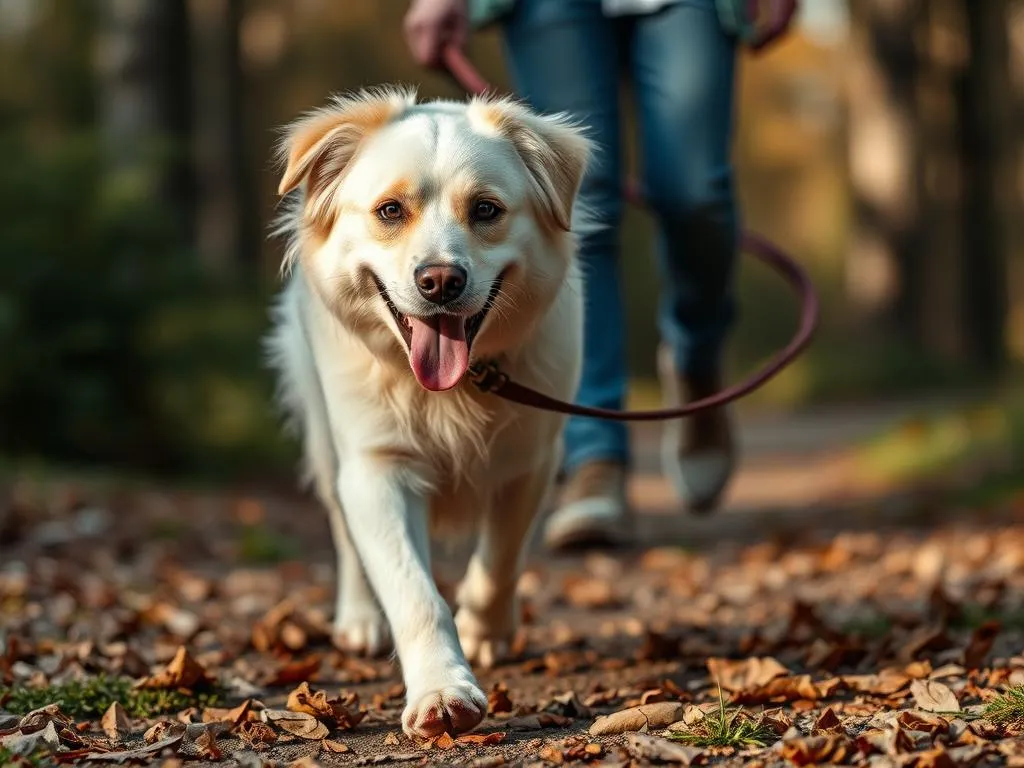
Introduction
Loose leash walking refers to the ability of your dog to walk beside you on a leash without pulling. This skill is not only integral to a well-behaved dog but also enhances the safety and enjoyment of walks for both the dog and the owner. Did you know that approximately 60% of dog owners report frustrations due to their dogs pulling on the leash? These statistics highlight the need for effective loose leash walking techniques.
The benefits of mastering loose leash walking extend beyond mere convenience. When your dog walks calmly beside you, it fosters better control, allows for safer interactions with other people and animals, and strengthens your bond. In this article, we will explore various loose leash walking tips that will help you and your furry friend enjoy your walks together.
Understanding Loose Leash Walking
What is Loose Leash Walking?
Loose leash walking is when your dog walks beside you on a leash that is neither tight nor slack. The leash should have a gentle curve, indicating that your dog is not pulling ahead or lagging too far behind. Unlike pulling, where the dog charges ahead with tension on the leash, or heeling, where the dog walks strictly by your side, loose leash walking allows for more freedom while maintaining control.
Why It Matters
For dogs, loose leash walking provides both physical and mental stimulation. It allows them to explore their environment without the stress of constant pulling and correction. For owners, it means fewer frustrations during walks, improved safety, and a more pleasant experience overall. Loose leash walking can also reduce the likelihood of your dog developing negative behaviors, such as aggression or anxiety, that can arise from being constantly restrained.
Preparing for Loose Leash Walking
Choosing the Right Equipment
The equipment you choose can significantly affect your dog’s ability to walk on a loose leash. Here are some options:
- Standard Leashes: Best for training as they offer more control.
- Retractable Leashes: Can encourage pulling; not recommended for loose leash training.
- Training Leashes: Designed specifically for training purposes, often shorter and sturdier.
When considering collars versus harnesses, both have their pros and cons. Collars can be effective but may cause strain on your dog’s neck if they pull. Harnesses distribute pressure more evenly and can discourage pulling, making them a popular choice for loose leash walking.
Setting the Right Environment
Begin your training in a quiet, familiar area, free from distractions. Ideal practice locations could be your backyard or a calm park. Minimizing distractions is crucial during initial training sessions, as it allows you to focus on teaching your dog the basics of loose leash walking.
Training Techniques for Loose Leash Walking
Basic Commands to Teach
Before diving into loose leash training, ensure your dog is familiar with basic commands such as sit, stay, and heel. These commands are foundational to loose leash walking, as they help establish communication between you and your dog. Consistent commands and cues will reinforce good behavior during walks.
Step-by-Step Training Process
Step 1: Getting Started Indoors
Begin training indoors where distractions are minimal. Use treats to lure your dog into walking beside you. Start by walking a few steps and rewarding your dog whenever they remain next to you with a loose leash. This reinforces the behavior you want.
Step 2: Transitioning Outdoors
Once your dog is comfortable indoors, transition to outdoor environments. Gradually introduce distractions such as other dogs or people. If your dog begins to pull, stop walking and wait for them to return to your side. This teaches them that pulling won’t get them anywhere.
Step 3: Reinforcement and Rewards
Positive reinforcement is vital in loose leash walking. Use high-value treats, praise, and playtime as rewards for maintaining a loose leash. Ensure you reward your dog at the right moment—immediately after they exhibit the desired behavior—to maximize effectiveness.
Common Challenges and Solutions
Addressing Pulling Behavior
Pulling is a common issue that many dog owners face. Dogs pull for various reasons, including excitement, curiosity, or simply because they want to get ahead. To discourage pulling, employ techniques such as stopping when your dog pulls, redirecting them back into position, and rewarding them for walking beside you.
Dealing with Distractions
Distractions can derail even the most dedicated training efforts. To maintain focus in busy environments, carry high-value treats or toys that your dog finds irresistible. Use these items to regain their attention whenever distractions arise, rewarding them for ignoring other stimuli.
Progress Tracking
Recognizing progress and setbacks is crucial in any training journey. Keep a training journal to track your dog’s improvements, noting any challenges faced along the way. Patience and consistency are key; remember that every dog learns at their own pace.
Advanced Loose Leash Walking Techniques
Incorporating Commands into Walking
Once your dog is comfortable with loose leash walking, start incorporating commands into your walks. This could include asking your dog to sit at intersections or stay while you adjust the leash. Engaging your dog with commands keeps their focus and reinforces your leadership.
Utilizing Obstacle Courses
Creating obstacle courses can make training fun and engaging. Set up cones or markers in your yard or at the park, encouraging your dog to navigate around them. This not only provides a challenge but also enhances their ability to focus on you during walks, improving their loose leash walking skills.
Maintaining Loose Leash Walking Skills
Regular Practice
Incorporating loose leash walking into your daily routine is vital for maintaining your dog’s skills. Aim for a short training session every day, gradually increasing the length and difficulty of your walks as your dog becomes more proficient.
Dealing with Relapses
Even well-trained dogs may experience relapses in their behavior. Common reasons for regression include changes in environment, distractions, or a lack of practice. If you notice your dog reverting to pulling, take a step back and revisit the basics of loose leash walking. Reinforce positive behaviors and be patient as your dog readjusts.
Conclusion
Mastering loose leash walking is essential for fostering a harmonious relationship between you and your dog. Not only does it enhance the walking experience, but it also promotes safety and strengthens your bond. Remember to practice consistently and be patient with your dog as they learn. With dedication and the right techniques, you can enjoy peaceful, stress-free walks with your furry companion.
FAQs
What is loose leash walking?
Loose leash walking means your dog walks beside you with a relaxed leash, without pulling ahead or lagging too far behind.
How do I stop my dog from pulling on the leash?
To discourage pulling, stop walking when your dog pulls and redirect them back to your side. Use positive reinforcement to reward the desired behavior.
Are harnesses better than collars for loose leash walking?
Harnesses are often preferred for loose leash walking because they distribute pressure evenly and discourage pulling, making walks more comfortable for your dog.
How often should I practice loose leash walking?
Regular practice is essential. Aim for short daily training sessions to maintain your dog’s skills and reinforce good behavior.
What should I do if my dog gets distracted during walks?
Bring high-value treats or toys to help regain your dog’s attention when distractions arise. Reward them for focusing on you amidst distractions.









